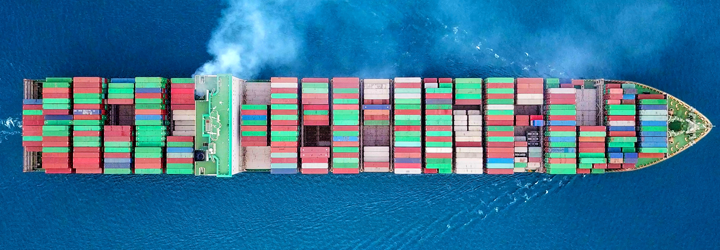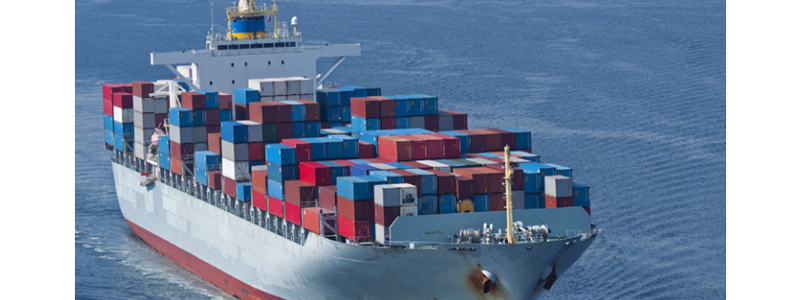
In the relatively flat global marine lubricants market, smaller suppliers have, in recent years, been slowly picking away at the market share of the major oil companies. Kunal Mahajan, manager of Kline’s Marine Lubricants Market Report, reveals how the IMO 2020 low-sulfur regulation could be about to reverse this trend.
While the global marine lubricants market remains steady, in terms of volume, at 2.3 million tons, the fact that the marine industry is going through a period of unprecedented change makes it a market to watch. The imminent introduction of the International Maritime Organization 0.50% global sulfur cap (IMO 2020) has been widely reported in terms of its implications for fuel refiners, bunker traders, and shippers. However, perhaps an overlooked area is the impact it is expected to have on the marine lubricants market.
While the top five major oil companies still hold more than three-fourths of the global marine lubricants market, over the past five years, they have lost around 10% market share to smaller suppliers. The mayhem created by IMO 2020 means this trend could be about to change.
One of the key issues here is time – or rather the lack of it. With the IMO 2020 norms being enforced on January 1, 2020, there is very little time left to resolve the issues and ambiguities that still remain.
Uncertainty surrounding the route shippers will take to compliance, combined with fuel availability and compatibility concerns, are creating challenges and opportunities.
As shippers look to maximize vessel up time, maximize the volume of cargo shipped per trip, and maximize profitability, the uncertainty of IMO 2020 is an added complication in an already tough world. Two of the available routes to compliance, installing exhaust gas scrubbers and switching to liquid natural gas (LNG) fuel, have barriers to widespread adoption. Both incur high cost and vessel downtime to install and result in a loss of cargo space, which makes them unattractive. In addition, there are also concerns that, if the IMO were to introduce even lower sulfur targets, scrubbers may become obsolete. LNG has strong environmental credentials: reducing CO2 by some 25% and with almost zero sulfur emissions, making it a strong candidate for the future. This is particularly the case as IMO says that ships built in 2025 must be 30% more efficient than those built in 2014. Although right now, a lack of bunkering infrastructure is the key barrier to the adoption of this compliance route.
Only 3% to 4% of the shipping fleet are expected to choose scrubbers or LNG as a route to compliance in 2020.
Due to the constraints of these two options, it looks highly likely that the majority of shippers will meet the new requirements by running their vessels on low-sulfur compliant fuels.
However, the first batches of low-sulfur marine fuels are only just coming to market, which makes the lack of time remaining to test them a real issue here.
This means shippers will have only a limited opportunity to identify any operational, storage, or handling issues the new fuels may present.
Fuel compatibility concerns
While some analysts focus on potential low-sulfur fuel availability issues, what is perhaps even more of a concern is fuel compatibility. Given the different approaches to low-sulfur fuel production, it is unclear at this stage what incompatibility issues may arise with fuels sourced from different suppliers. This is raising a number of concerns for shippers:
- Will all batches of fuel meeting ISO 8217 behave the same in the engine?
- Do fuels from different suppliers need to be stored separately on board ship?
- How is it possible to be sure the lubricant and fuel are compatible?
- Will different lubricants be needed for each fuel?
Many of these questions can only be answered when ships are running on the new fuels and operators have a chance to assess how they behave under both normal and slow steaming conditions. This is an uncomfortable scenario and introduces an element of risk that shippers will be keen to mitigate.
One trend that may emerge here is a shift to a single supplier approach, where both marine low-sulfur fuels and lubricants are purchased from the same organisation. In addition, as experience with the new fuels grows, operators may also look for suppliers that have the resources to help them resolve any issues that may arise.
Those companies with a global supply capability, who can ensure that compliant fuels and compatible lubricants are available wherever the ships sail, will have an advantage.
The major oil companies are probably best positioned to respond quickly from both supply reliability and operational performance standpoints. This could give the five market leaders a real opportunity to regain some of the share in the global marine lubricant market that they have lost in the past few years. Smaller companies may need to look for lucrative new opportunities that are now emerging in this market to offset this trend.
Marine Lubricants Market Report released
Our new Global Marine Lubricants Market Report, published in January 2019, provides an in-depth analysis of the challenges and opportunities facing the market. Global market size estimates, which are broken down by product type and region, are provided for 2018 and 2023. The report covers marine engine oils, including cylinder oils, trunk piston engine oils, and system oils, as well as covers other marine fluids, including hydraulic fluids and gear oils.
The Global Marine Lubricants Report reveals the economic, technological, and regulatory trends shaping the global shipping industry and driving lubricant demand and will help organisations organizations to develop robust marine lubricant business strategies.
Read more about the Global Marine Lubricants Report or purchase report.

